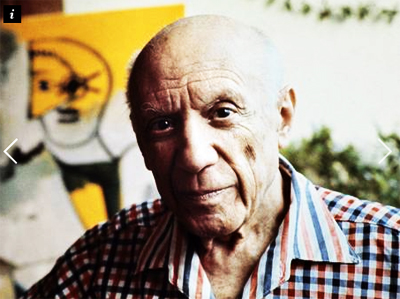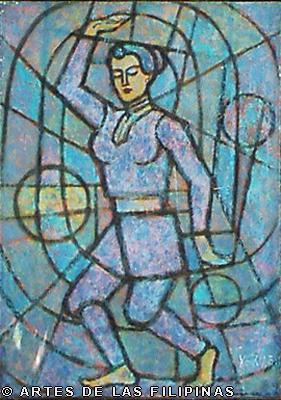Antiquity: Bul-ul: A Mythical Piece of Ifugao Sculpture
by: Rico Acda
The beauty that one can exalt in seeing the seemingly never-ending terracing of rice fields, remarkable long-stretching successive lines of rice paddies hand-contoured in several edges of Cordillera mountain is really a historical dictate in our conscience and to the minds of our foreign visitors and a part of this monumental achievement by our brother Ifugao. There is another cultural identity that exhibits their greatness – this is the Ifugao Bul-ul sculpture. These sculptural objects considered as an indigenous kind that deserves the right to be marked intrinsically important for the Ifugao’s cultural existence. If history told that rice terraces belong to the essential nature or constitution of an Ifugao living it is by the same degree, that Bul-ul sculpture be acknowledged as an integral part of this festive agriculture drama.
Rice agriculture in the Ifugao mountainous area of fertile land is the primary reason for their physical survival. This fact in anyway obliges the Ifugao people to invent a preventive or defensive instrument to protect their environs and its agricultural produce.
This dream by the Ifugao gave rise to a tangible image that will magically bring the assurance of protecting their primary source of living from any physical or natural adversaries. And because the Ifugao people are incidentally praise-fearing persons, their feeling of attachment to the concept of Gods; because they strongly believe that these Gods intervene with their undertakings and communicate with their dead ancestors, talented Ifugao carver were being motivated to create such figure like Bul-ul in which by the process of enchantment this will somehow encase the spirits of their deceased ancestors and thereby mediate their demands to the Gods.
The Origin of Bul-ul
It is acknowledged, by some writers and researchers that indeed Ifugaos developed a tribal religion, the core of which is the baki or rites for man and for rice culture. And because, in the daily life of Ifugao, it is known that sculpture pervades, distinct forms coinciding their belief to hierarchy of Gods. The Bul-ul or anito figures are such the product of their spirit-figure representation. Bul-ul is believed to be a certain bagol – generic name of an Ifugao God, that marked as guardian spirits of rice granaries, forests etc. For some places in Ifugao province Bul-ul may even represents their ancestral figure. They believe that the spirits of their ancestors reside in the Bul-ul from time to time and occasionally when being asked by the mumbaki – the native priest.
The Bul-ul can be seen predominantly in some respective areas in Ifugao province: namely: in Hapao-Hungduan, Kiangan, Batad, Kabubuyan, Hingyon, Mumpolya and Moyayao.
The Structure/Form of the Bul-ul
Ifugao carvers normally produce Bul-ul in pairs, male and female but not always. Sometimes, upon the request of the owner of the rice field only one bul-ul is to be carved. It could be a male or a female but normally according to some mumbaki, a male bul-ul is the one that is highly respected because Ifugao strongly believed that male bul-ul can do the duty of guarding the rice granary alone.
Like the hagabi complex, before the bul-ul is being carved the wealthy owner of the rice field-the kadangyan, would ask the native priest – the mumbaki to hold a preliminary baki to assure that a powerful or an effective bul-ul will be created. There is no rule or a standard of measurement that exacts definite size of the bul-ul. As long as one man or individual can carry it in and out of the granary of house the problem of size is not an issue. Like the hagabi, the bul-ul is usually being carved out from a very strong narra wood or ipil wood, highly selected by the elders in the forest.
Bul-ul is not an ordinary object for the sculpture among the Ifugao. It is something that plays a very significant role in Ifugao rice agriculture especially during the safekeeping of the palay harvest inside the granary or Ifugao house. The figure bul-ul is highly given the respect and praise based on a belief that spirits of their dead ancestors reside on it. And if the figure is not being properly treated with such modesty the spirits may response in return with such undesirable hostile mood. Sickness and pestilence could be felt as sign of this discontentment by the Gods.
A wealthy kadangyan may have more that one bul-ul depending upon the number of granaries he/she has. In this respect, if he/she has two of three granaries, he is required to at least have three bul-uls, one bul-ul for every granary. According to some mumbaki a big granary may have one or two bul-uls while the small ones may even have either one or two bul-uls or comes in pair.
Bul-ul has a more generalized, simplified figurative representation of a human being; with a simplified head, a set of arms, a torso and a pair of legs. The Bul-ul is usually being mounted in a remaining wooden platform that provide somehow the stability for the figure.
And in some places in Ifugao during ritual rites whenever the bul-uls are taken out from the granaries and being placed in front of the agriculture produce a proper positioning of the bul-ul is being observed. It is said by some mumbaki that the male bul-ul must be on the right side while the female one must be on the left side facing the fore of such agricultural crops. And in some occasions the bul-uls might have some adornments to its body. A male bul-ul could be wearing a g-string piece of cloth while a female one could be wearing a tapis- a piece of cloth placed around the waist. Bul-uls might have ornamental earrings and metal anklets. But normally the bul-ul remains in an austere image- bold exposing both the genitalia: the phallus and vagina. Sometimes the phallus is being held in a very recognizable size intended to show the prowess of the male wealthy kadangyan.
(Rico Acda has written numerous articles on the subject of Bul-ul and other antiquities. He is completing his masteral studies in the University of the Philippines.)










